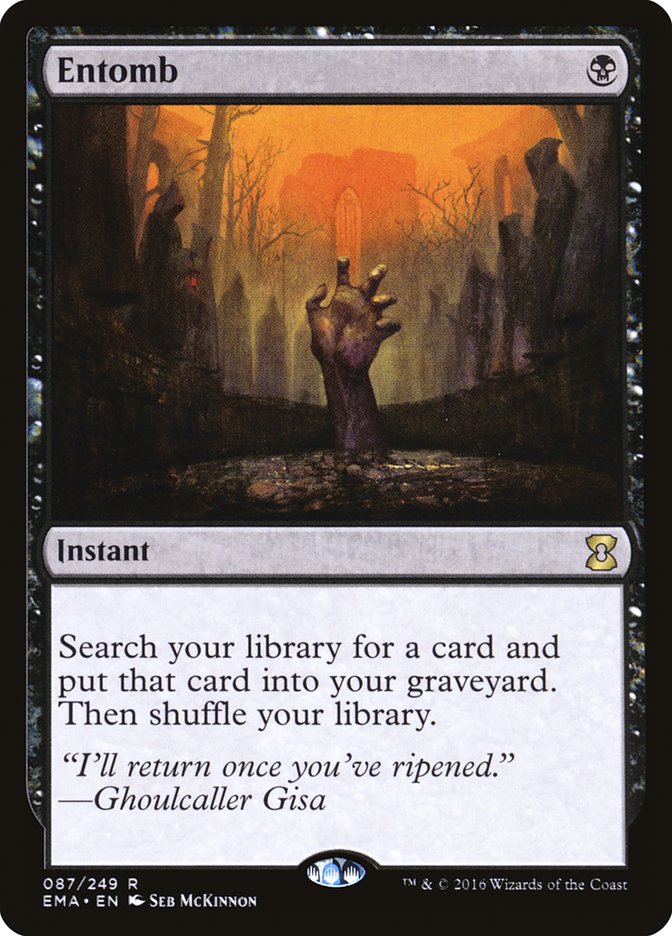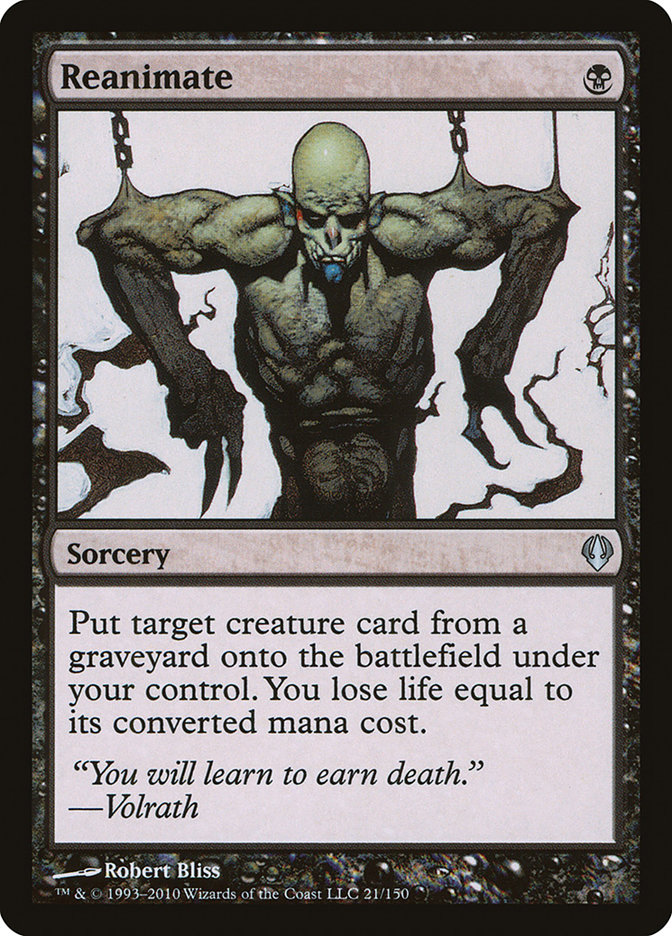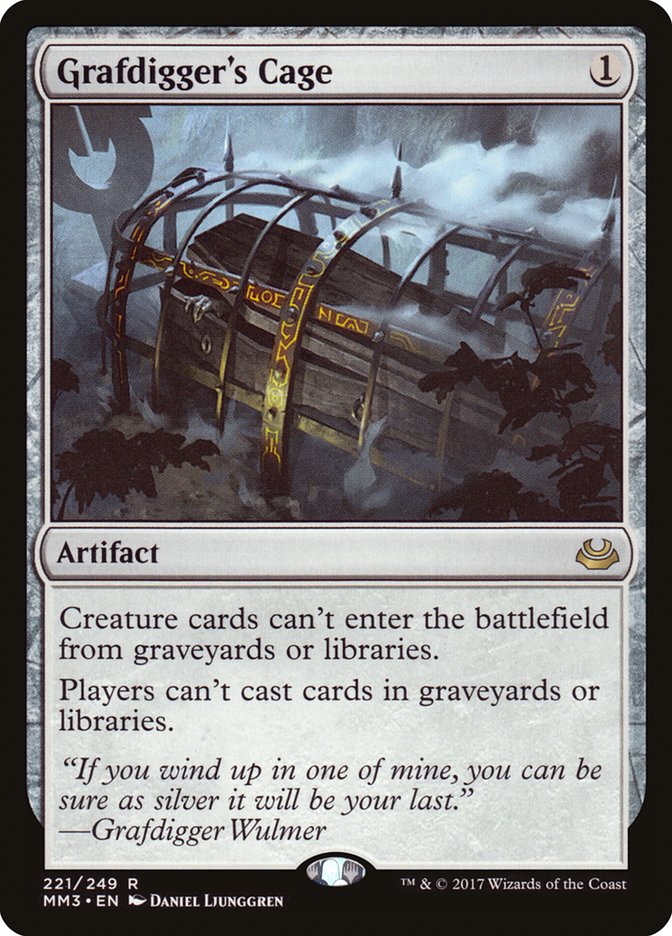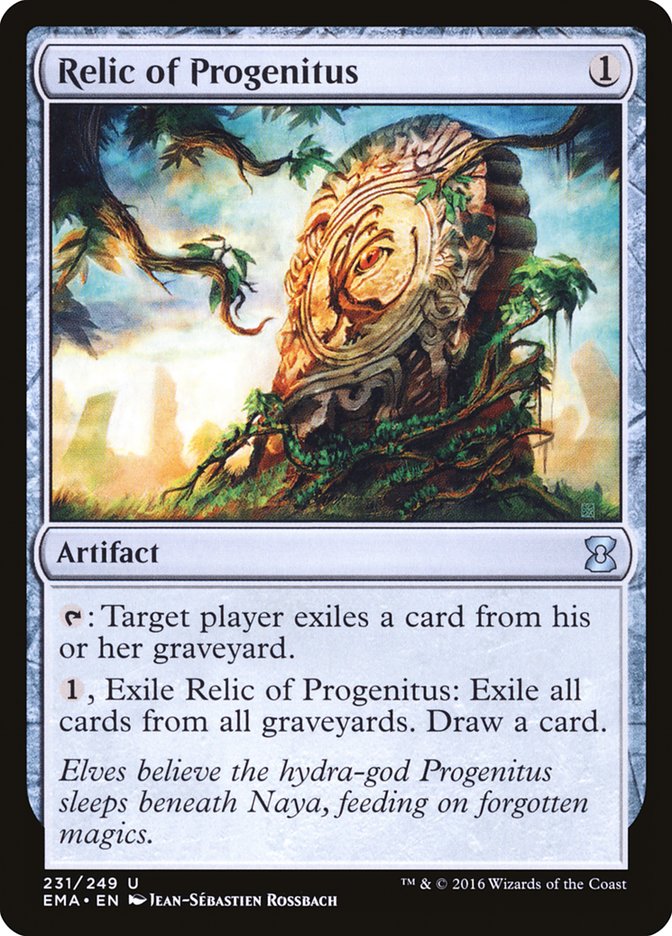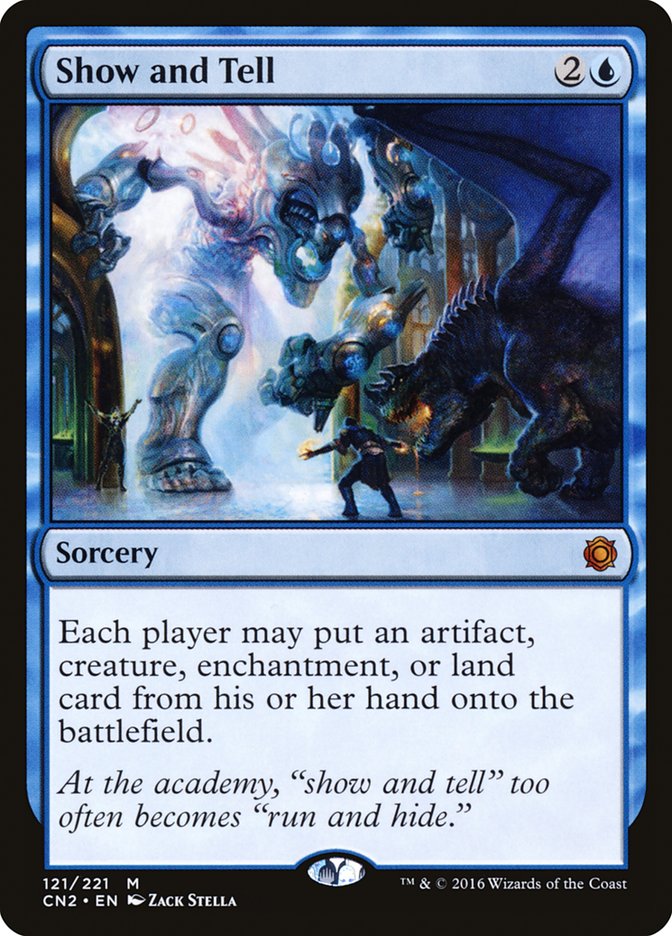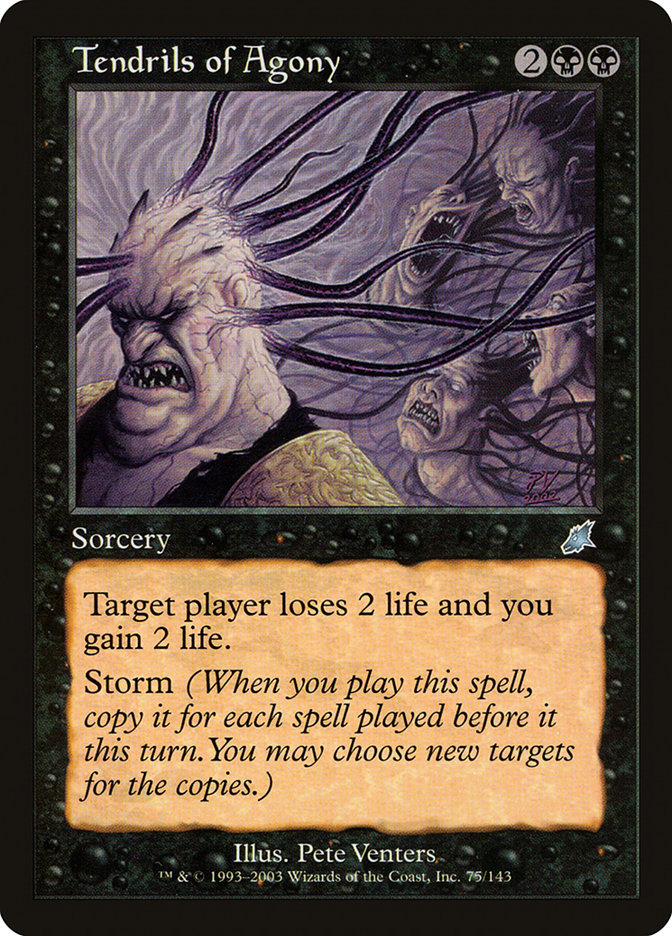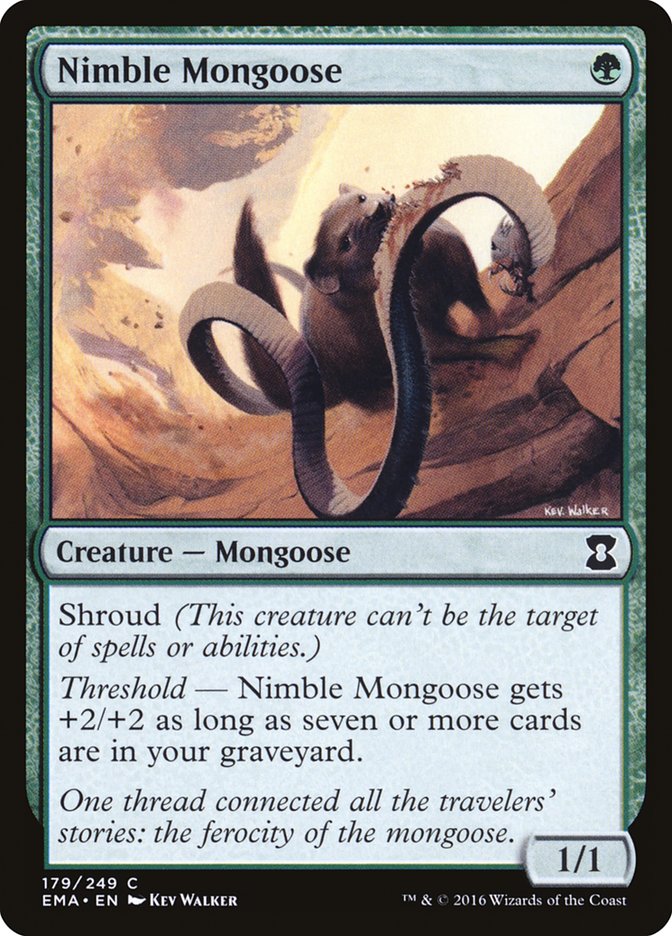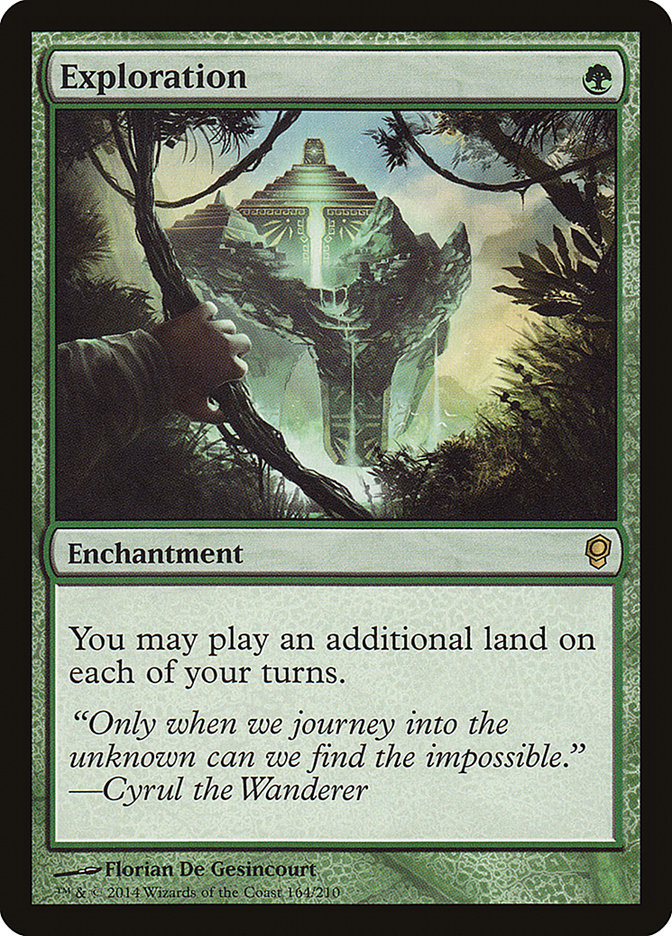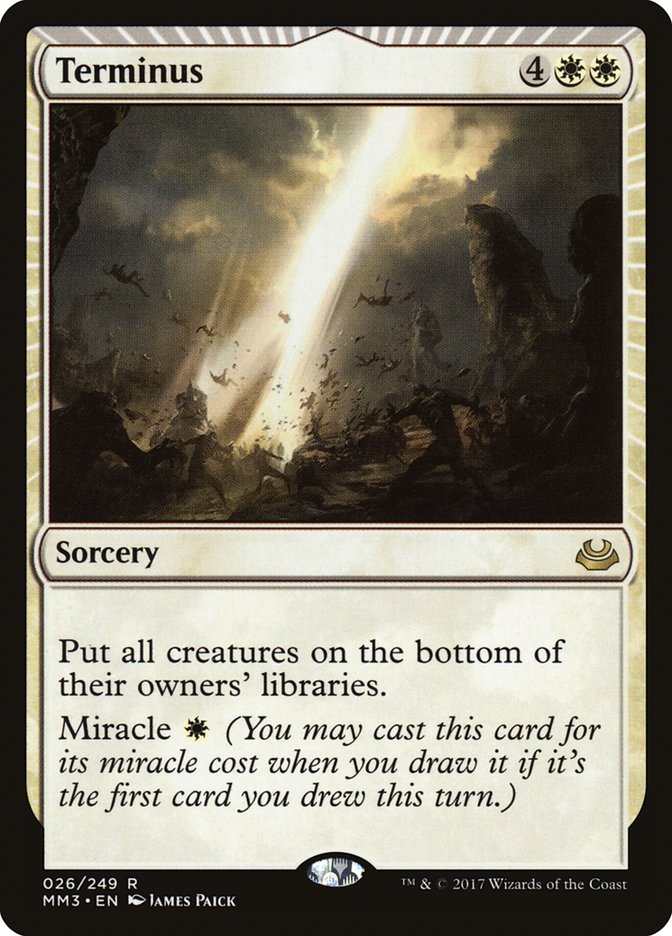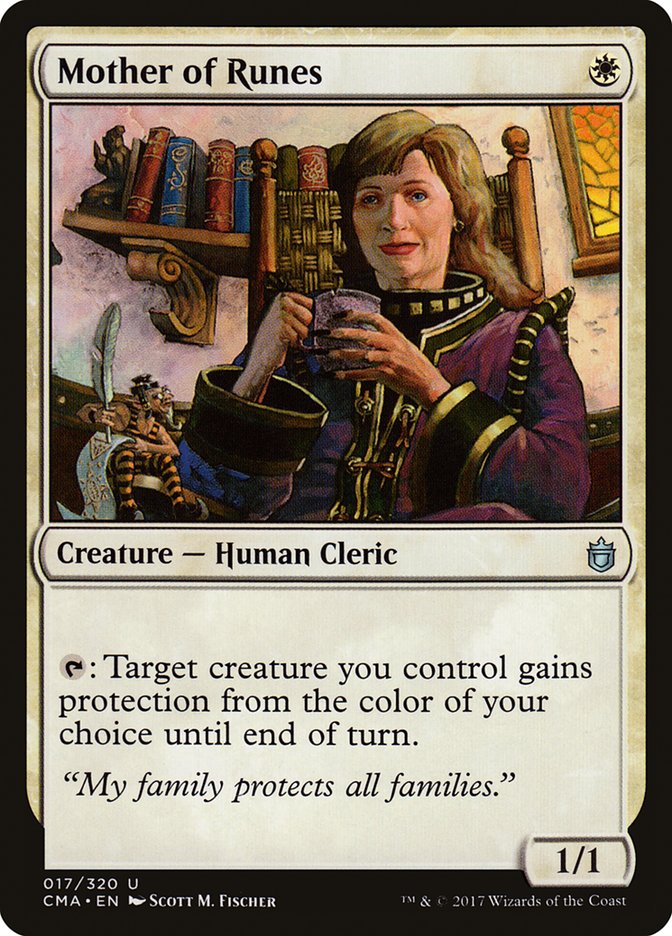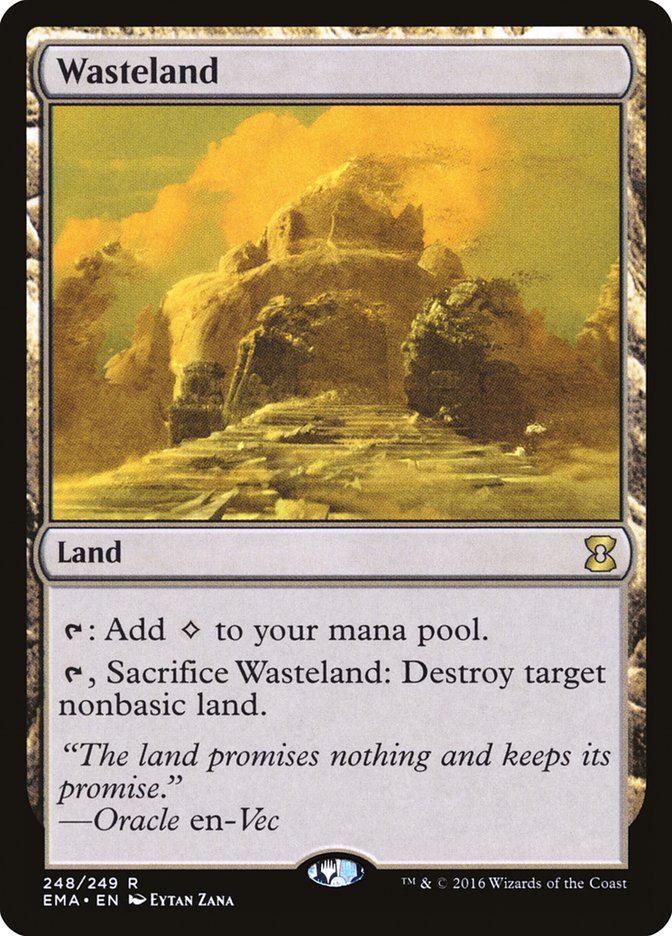The last two weeks have been a flurry of Legacy excitement and speculation,
but what else can you expect after the format gets its biggest shake-up in years? The Deathrite Shaman ban made all of us interested in
playing Legacy do a lot of thinking about what the new Legacy would look
like. Right or wrong, we all had our predictions for how things would
unfold. Here are some of the ones I was working with going into SCG
Worcester:
-
Temur Delver would be the most popular Delver variant and would
enjoy about 75% of the metagame share that Grixis Delver had before
the banning. -
Some graveyard-centric strategy would rise and take advantage of
Deathrite Shaman’s absence. -
The format as a whole would become more unfair, with the metagame
share of combo decks rising across the board.
While it was a foregone conclusion that I would play Temur Delver at #SCGWOR the
second I got wind of the Deathrite Shaman ban, the exact 75 was still a
point of contention. Coming up with these predictions gave me something to
shape the decisions regarding my last few slots around. Because I expected
a rise in graveyard decks, it was an easy call to not leave my Surgical
Extractions or Grafdigger’s Cages at home. Similarly, since I was expecting
an unfair metagame, playing three copies of Spell Pierce sounded great.
That’s the value of predictions like these: giving us a framework to make
decisions around in a time of uncertainty. Nobody knows how things will
actually play out, but you have to make some sort of guess to be in the
game at all. But sometimes we get so caught up in our predictions and
wanting to be right that we forget that they were, in the end, just our
best guess. After the dust settles and we have actual data to work from,
it’s important to be able to leave our predictions behind us and make
future decisions based on reality, not on the reality we thought would be.
That’s an especially important lesson to keep in mind right now, as the
aftermath of the Deathrite Shaman ban was one of the most difficult things
to predict I’ve encountered in some time. Deathrite Shaman may have been
just one card, but it was an important piece of far more than one popular
deck. Even worse, Deathrite was a uniquely versatile card. It had several
abilities, each of which affected the format in a different way. Unraveling
the net effect of the card’s impact on the format was no easy task, and as
such predictions about what would happen after the ban all came with a high
degree of uncertainty.
So let’s dive in to the result of the #SCGWOR Team
Constructed Open and Legacy Classic and start to piece together what effect
the Deathrite Shaman ban actually had on the format and see if we
can identify where it will go from here.
Loser: Reanimator
Let’s start things off with one of the big surprises from the weekend: the
failure of Reanimator strategies, B/U or B/R, to do much winning.
It was a natural thought that graveyard strategies would see an uptick in
success without the ubiquitous Deathrite Shaman to keep them in check. Of
the possible graveyard decks, Reanimator was the one that looked poised to
gain the most from the absence of Deathrite because its graveyard
dependence was just a single, specific card, the exact kind of graveyard
shenanigans that Deathrite Shaman was the best at fighting. But that
natural thought was not borne out by our observed results.
I remember looking at the Day 2 metagame breakdown when it went live and
realizing that there were no true graveyard decks left in the tournament to
use my Surgical Extractions and Grafdigger’s Cage against. I was surprised
then, and I’m still somewhat surprised now. It’s just not the result you
would expect after the banning of a powerful and commonly played piece of
graveyard hate.
The only graveyard-centric deck to get published last weekend was the 7th
place list from the Legacy Classic, B/R Reanimator. That’s about the same
level of success that graveyard strategies were seeing before the Deathrite
ban, maybe a little less. Certainly not compelling evidence that they got
at all better with the ban, despite all logic.
So, why would this be? The obvious first explanation is that Deathrite
Shaman wasn’t actually an antagonist to these decks, but I don’t buy it. I
could believe that Deathrite’s role in keeping graveyard decks down was
overstated, but it seems very unlikely that the best deck in the format
playing four copies of a card that could just lock them out of the game had
nothing whatsoever to do with their lack of success.
Another idea is that players overcompensated for Deathrite’s ban with
graveyard hate.
If you’re about to play a tournament you’re worried will be overrun by
graveyard strategies, the obvious solution is to throw a couple more
graveyard hate cards into your sideboard. Worst case scenario you have a
couple slots in your sideboard that don’t do a lot for you, best case
scenario you manage to beat all the graveyard decks that came out of the
woodwork this tournament. That could be what we saw happen last weekend.
It’s hard to say which of these explanations is the correct one as things
stand, we need more time to pass. If it’s a case of overcompensation,
Reanimator strategies will eventually enjoy their day in the sun. Of
course, there’s still one more explanation to consider, but before I can
introduce it, we need to talk about one of the winners of the Deathrite
Shaman ban.
Winner: Other Combo Decks
On Day 2 of the Team Constructed Open last weekend, there were three copies
of Sneak and Show and one copy of Storm in the Legacy seats. Two of those
three copies of Sneak and Show made the Top 8, and the Storm deck won the
tournament. It was a good weekend for combo decks in Legacy.
This outcome was one of the level one predictions from the Deathrite Shaman
ban. Level zero, play of Grixis Delver plummets. What decks did Grixis
Delver keep down? That’s right: combo decks. So level one, combo decks get
better in this new, reduced Delver Legacy. Easy.
Now then, back to Reanimator for a second. The third explanation for its
failure to perform: being beat by other, faster combo decks. The thing
about graveyard strategies in general and definitely for Reanimator
specifically is that the unfair thing they are doing doesn’t kill
immediately. They bring back a Griselbrand or a Chancellor of the Annex and
end up passing the turn with a battlefield that fair decks don’t have a
chance of beating. But Storm can often still find a kill, and a hasty
Emrakul, the Aeon’s Torn will sure end the game regardless.
Reanimator does play threats that are lights out for the other combo decks,
but it’s not all of them. Storm will probably struggle to beat a Sire of
Insanity, but the B/R deck can’t always find Sire; even with Entomb it
doesn’t have quite that level of control. Not ending the game on the spot
is a real problem, and because the other combo decks are blue, they have a
better hope of rebuilding from discard and finding what they need and still
being able to combo.
In the end, this is somewhat a point of contention. On one level,
Reanimator strategies have the edge on combo because they are somewhere
between a turn and half a turn faster, and that’s a sizable advantage in
the combo psuedo-mirror. On another, they don’t end the game on the spot
and the current lists aren’t gunning for combo, reducing the likelihood of
finding the pieces they need to close the game against combo.
As such, I’m still expecting a Reanimator resurgence. Either its being held
back by the field overreacting to the absence of sideboard hate or isn’t
currently configured to win combo psuedo-mirrors; either way, these are
problems that will be fixed with the passage of time. And regardless, the
combo archetype is a decent place to be for the foreseeable future.
Winner: Temur Delver
This was one of the predictions we got right.
It’s a truism that you can’t go too wrong playing Delver of Secrets in
Legacy, and I hope it stays that way. The removal of Deathrite Shaman from
the format paved the way for Temur Delver to return to its place as the
most popular Delver variant. For more on why this is, check out the Temur
Delver
article
I wrote last week.
Day 2 of the Team Constructed Open had five copies of Temur Delver and the
deck also took 3rd place in the Legacy Classic. That’s more appearances in
one weekend than Temur Delver has seen in the last four months, which is
convincing evidence of the deck’s significant improvement post-Deathrite
Ban. Those six lists were all reasonably similar, with a few small points
of contention and one loud point of agreement: no copies of Hooting
Mandrills. Sorry Mandrills fans, I think the jury has come to a verdict on
this one.
But things aren’t all roses now for Temur Delver and its leadership of the
Delver clans. Two copies of Grixis Delver and one copy of Jeskai Delver
made Day 2 of the Team Constructed Open, and Jeskai Delver also took 9th in
the Legacy Classic. Noah Walker’s Grixis Delver list ended up taking 3rd in
the Open, and it’s pretty sweet:
Creatures (14)
Lands (18)
Spells (28)

Going forward, I believe that Temur Delver will remain at the top of the
Delver heap, so to speak, but the margins will grow thinner. I imagine a
significant contingent of previous Grixis Delver players will be encouraged
by the week one showing of the post-ban version and decide to give it a go.
Every game of Legacy I’ve played that featured Bomat Courier has only
further impressed me with the card, so I imagine the deck has real staying
power.
Loser: Delver of Secrets and the Decks that Beat It
This is another call that I think a lot of people got right, though the
magnitude is a sight more severe than I think any of us expected.
Prior to the loss of Deathrite Shaman and Gitaxian Probe, you would have
been hard pressed to find a Legacy player unwilling to admit that Grixis
Delver was the best deck in the format. It’s not a huge surprise that the
banning of two cards in the deck would knock from its throne, nor should it
be surprising that the new best Delver deck can’t just pick up where Grixis
left off.
Still, I didn’t realize just how many fewer Delver players there
would be overall. In fifteen rounds of play last weekend, I played a grand
total of three Delver mirrors. That’s obviously anecdotal, but it felt
representative of the tables as I observed matches and was certainly in
line with what I heard other people saying and the Day 2 metagame
breakdown. There was once a time when playing Delver mirrors for half the
tournament was the norm, and more than that wasn’t unheard of. Times have
changed.
Of the Delver decks on Day 2 of the Open, however, a lot of them ended up
near the top of the standings. The deck was reasonably well-positioned for
the winner’s circle metagame with the success of combo decks despite its
loss of overall power. I expect Delver to gain popularity as the format
continues, though I doubt it will ever again reach the level of play it
enjoyed under Grixis Delver’s reign.
Decks known for their great Delver matchups, like Lands and Miracles, did
not have a great weekend. This stands to reason, as the deck they prey on
just didn’t show up in the numbers it used to. These decks need to be
retooled for the new reality they find themselves in.
Of course, it wasn’t just that Delver didn’t show up in the numbers it used
to. The preponderance of Delver players being on Temur rather than Grixis
is a hit for both decks. Nimble Mongoose is a uniquely troubling card,
stopping both the Maze of Ith and Punishing Fire plans out of Lands and
giving the Delver access to a critical threshold of threats that require a
sweeper out of Miracles.
This combination isn’t good for these decks. They can be retooled to exist
in a non-Delver world, and they can be retooled to fight Temur Delver
rather than Grixis, but doing both simultaneously is a real challenge.
Because Lands cares less about the switch from Grixis to Temur than
Miracles, I expect it to bounce back quicker than Miracles will.
Winner: Death and Taxes
Death and Taxes has a good Delver matchup, but still saw a lot of
success last weekend. It was the second most popular deck on Day 2 of the
Open and placed two copies into the Top 16 of the Legacy Classic.
Actually, let’s stop this section right here. There’s a more interesting
trend to discuss.
The Big Winner: Smallball Mana Denial
My big takeaway from week one of the Deathrite Shaman ban is that those who
claimed that the biggest offense of Deathrite Shaman was giving black
access to a mana creature were right. Graveyard decks did not see an
immediate resurgence, giving a lie to the idea that the graveyard hate on
the card was the biggest issue. But both Death and Taxes and Temur Delver
had great weekends, and both are decks that care a lot about denying their
opponent mana.
Temur Delver being good again wasn’t enough to reach this conclusion, as it
was the natural successor to Grixis. But Death and Taxes winning a lot as
well, that means something. The thread these two decks have in common is
mana denial, and it makes sense that mana denial would be on the rise after
Deathrite got banned. When the greedy decks beat the mana denial decks,
there was no reason to play mana denial. But now that paradigm has changed,
and even the decks with modest manabases need to be ready.
Going forward in Legacy, my best advice is this: don’t get greedy with your
manabases. Stick to U/W Stoneblade over Jeskai, enjoy your high basic land
count. Without Deathrite Shaman, there’s nothing in the format stopping the
mana denial decks from doing their thing, and you need to be prepared. It’s
a real Wasteland out there.
Magic is a game of continual and gradual change, and it’s very likely that
several of the trends noted in this article will completely change course
before the format reaches an equilibrium. I’m extremely excited to watch
this all play out and to do my part to help Temur Delver to the top. But
regardless of where the format goes from here, these week one results are
our best window into the true impact and legacy of Deathrite Shaman. It’s
just like they say: to truly understand someone, you must let them go.
Or something like that.





